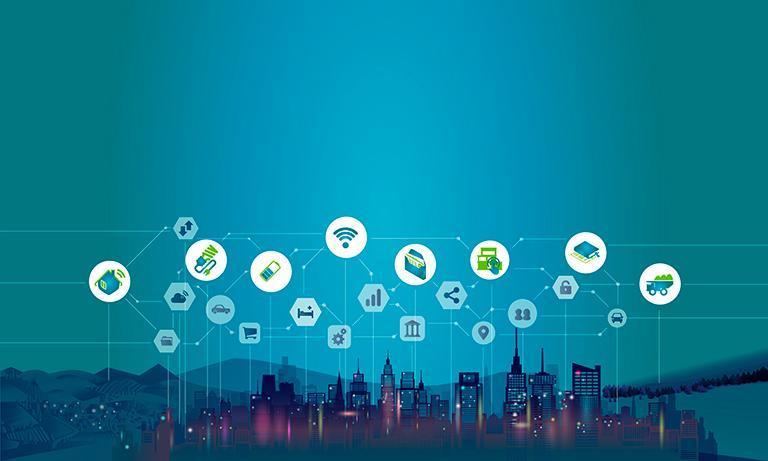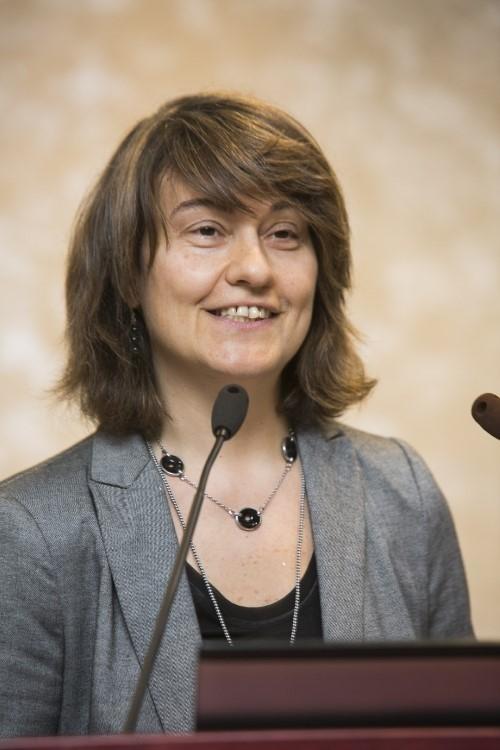
It is always energy efficiency first
di Claudia Canevari
DOI 10.12910/EAI2020-059
Energy efficiency is the easiest way to reduce our carbon footprint, it creates jobs, saves money, improves air quality, betters living conditions, reduces energy import demands and contributes to the EU’s competitiveness. That is why the ‘Energy Efficiency First’ principle needs to become a cornerstone not only of the EU energy policy, but also of other policies, strategies and investment decisions.
The Commission is working on making this a guiding principle for the EU energy policy and beyond.

Claudia Canevari
Directorate General for Energy, European Commission
The energy we do not have to generate is the cheapest and the cleanest. We should not generate energy we do not really need. Energy efficiency is the easiest way to reduce our carbon footprint, because it is applicable everywhere energy is used. On top of that, energy efficiency creates jobs, saves money, improves air quality, betters living conditions, reduces our energy import demands and contributes to the EU’s competitiveness. That is why the ‘Energy Efficiency First’ principle needs to become a cornerstone not only of the EU energy policy, but also of other policies, strategies and investment decisions. The Commission is working on making this a guiding principle for the EU energy policy and beyond.
The principle seems like an obvious choice, but saving energy is hard work. Why? Multiple barriers hamper us from implementing energy efficiency. Here I will illustrate two. First, we have to know where energy can be saved. In houses, in offices, in transport, in industrial processes. Often, there is a lack of information and of awareness on where energy is used and where it can be saved. Secondly, you might need to invest first to gain return on your investment later. Not everybody has the means, or is willing to make such an investment – or knows about the advantages such an investment would bring. In addition, sometimes, especially at the outset, saving energy costs money.
The barriers that prevent us from reducing our energy consumption are what we call ‘market imperfections’. To help overcome these market imperfections, the European Commission adopted the Energy Efficiency Directive (EED) in 2012. The EED contains headline targets to increase energy efficiency within EU Member States. Because the EED is a directive, Member States have to devise and then implement the measures in national policies. Originally, the goal was to increase energy efficiency by 20% in 2020.
In 2018, the European Union revised the EED and extended the goals to 2030. By then we should achieve an energy efficiency of at least 32.5%. Ambitious, I agree, but achievable and advantageous. In light of the Green Deal, which is the EU’s overall strategy to become climate neutral by 2050, the Commission will look into the existing energy efficiency targets and see how they should be adapted to the increased climate ambitions. I will tell more about this later.
How are we doing as Europe?
It is the Commission’s job to carefully monitor how Member States implement the measures undertaken to reach the energy efficiency goals. Member States have to submit their National Energy and Climate Plans in which they explain the policy they already implemented and are planning to implement to reach the goals. So how are we doing? Did we achieve the goals for 2020? In addition, are we on schedule for 2030? For 2020, there is good news and bad news. The good news is that preliminary calculations suggests that we might meet the target. Unfortunately, the reduction of energy consumption is not due to a structural increased energy efficiency, but to reduced demand. COVID-19 certainly has been playing a key role in the reduced energy consumption. Therefore, we can expect a quick increase in energy consumption as soon as the economy will pick up again. According to the data, the energy consumption of Member States decreased between 2010 and 2014. After that, consumption started to climb again.
The latest numbers show a decline of 0.6% in primary energy consumption in 2018 compared to 2017, but this pace of reduction is insufficient to meet the EU target in 2020.
This does not mean that there was no progress in saving energy. Between 2005 and 2017, the energy intensity in industry has improved by as much as 22%. We were more efficient, but our activities also increased.
For 2030, it does not look good either. Analysing the National Energy and Climate Plans of the Member States, the Commission concluded that the sum of their commitments to reduce energy consumption is not sufficient to achieve the EU target of 32.5% for 2030. The sum of commitments for final energy consumption reaches 29.4%, so we are 3.1 percentage points short. For primary energy consumption, the gap is 2.8 percentage points. Therefore, we need Member States to seriously step up their efforts.
The European Green Deal
The European Green Deal is the EU’s determined plan to become the first climate neutral continent in 2050. It aims to turn our economy into a competitive and sustainable one by tackling all relevant areas, such as transport, agriculture, biodiversity, circular economy, renewable energy and energy efficiency. The headliner of the Green Deal is the increase of the climate ambition. The Commission recently proposed in its 2030 Climate Target Plan that the EU should increase its greenhouse gas reduction target from 40% to at least 55% below 1990 levels by 2030. This was following a key pledge from President Von der Leyen, when the European Parliament confirmed her in office.
Energy efficiency is a cornerstone to reach this objective. We know that 75% of all EU’s greenhouse gas emissions come from the production and use of energy, and therefore the Green Deal specifically states that energy efficiency is a priority. It also states that the Commission will review and revise all relevant energy legislation by June 2021. This might also imply an increased energy efficiency target for 2030. My colleagues and I are now working on this extensive exercise every day.
The Renovation Wave
The Commission recently adopted a Communication on a very important part of an energy efficient future: The Renovation Wave. The name is deliberately chosen: we aim to start a wave of home renovations that will spread over Europe. By 2030, 35 million buildings should be renovated.
The Renovation Wave plays a crucial role in our energy efficiency policy, because it has a direct impact on the lives of all EU citizens. It concerns our homes, the places where we study and work, and where we are treated when sick. Buildings are responsible for about 40% of the EU’s total energy consumption. Obviously, there is big potential, but our buildings change very slowly and we expect that over 85% of the current buildings will still be standing in 2050. Moreover, unfortunately, it seems that renovating is not at the top of peoples to-do-lists either. The weighted annual energy renovation rate is low at some 1%. This means that it takes one hundred years to renovate all buildings.
With the Renovation Wave, we aim to double the annual energy renovation rates in the next ten years. We propose a range of measures to accomplish the doubling, but we will focus in particular on three areas:
- tackling energy poverty and worst performing buildings;
- public buildings, such as educational, healthcare and administrative facilities;
- decarbonisation of heating and cooling.
Renovating our buildings is not only crucial to become more energy efficient; it also has many other benefits.
For example, it will enhance the quality of many lives and is will create up to 160.000 new additional jobs in the construction sector, which consists mostly of local small and medium enterprises. That is now, during the COVID-19 pandemic, more needed than ever. The Renovation Wave makes up an important part of the EU recovery plan. Our commissioner Kadri Simson summarised this spot on: ‘The green recovery starts at home’.
The review and revision of the Energy Efficiency Directive
The plans for building renovation look very promising. However, these alone are not sufficient to reach the targets. The rest of the energy efficiency policy, therefore, needs to advance as well. As announced in the Green Deal, the reviewed and revised EED is expected in June 2021. We are now working on an evaluation and on an impact assessment. The main goal of the evaluation is to assess the effectiveness of the EED since its entry into force in 2012.
We will assess to what extent the objectives of the EED were achieved. In 2018, we already evaluated certain elements of the Directive; we will not evaluate those elements again. This evaluation will also assess whether the framework of the EED is fit to overcome the remaining market imperfections. This would mean also identifying shortcomings, gaps and weaknesses.
Based on the results of the evaluation, we carry out a forward-looking impact assessment.
The aim of the impact assessment is to know whether and how to change the EED, to address the remaining ambition gap and the higher climate ambition for 2030.
Meanwhile, we have organised nine workshops with stakeholders to discuss the different articles of the EED and to hear new ideas for energy efficiency policy.
It is essential for the Commission to receive feedback from many stakeholders, because it is our purpose to make the EED as useful and effective as possible.
Very soon, we hope to publish the Open Public Consultation. This is an online questionnaire where every EU citizen can provide us with feedback.
Once we gathered all elements, we will put them together to create a futureproof EED that will further strengthen the role of energy efficiency as the indispensable element of the EU climate and energy policy.
Conclusion
The full decarbonisation of the European Union by 2050 is an ambitious objective.
The work on energy efficiency substantially contributes to this important goal.
We aim to deliver an even stronger framework to make energy efficiency the first consideration in all decisions related to energy and to allow our society to fully benefit from increased energy efficiency in all sectors.
Claudia Canevari, Head of the unit “Energy Efficiency: Policy and Financing” in the Directorate General for Energy of the European Commission, talks us through the importance of energy efficiency to reach the Green Deal objectives. She is determined to allow the Commission to deliver a reviewed and revised Energy Efficiency Directive (EED). This revised (EED) will work towards closing the gap of the energy efficiency target and bring the EU closer to reaching its climate goals. On top of that, the revised EED will create many jobs and improve people’s health. Ms Canevari is Italian. She has been working for the Commission for nearly 25 years.

